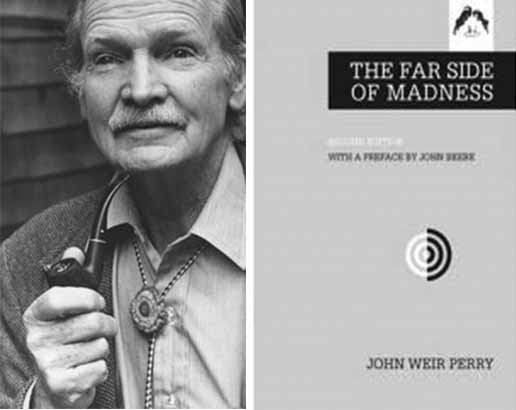Carl Jung, John Weir Perry, and Emotion in Dreams

Jung: Following the Emotion in the Dream
“Jung discovered that when we remember a dream, the key to really getting the greatest understanding is to first focus in on the exact emotion we feel in the dream.”
Depth Psychologist Michael Cornwall provided this story of one of the critical insights about dreams that John Weir Perry learned from working with Jung:
As a Jungian, and a blogger on Mad In America, I’ve been feeling the need to weigh in a bit from a depth psychology perspective. I rarely read about dreams, or the function of the personal or collective unconscious here. So here goes my attempt to communicate what my friend and mentor John Weir Perry shared with me, from a teaching on understanding dreams that Carl Jung had personally revealed to John in the 1940′s.
John said it was the single most important thing he had learned from Jung in Zurich, because it contained a simple key to seeing how emotion and imagery function in dreams, madness and waking life. It played into John later re-defining an archetype into the simple formula “Affect-Image”. First to provide some historical context; over a century ago Sigmund Freud, the father of psychoanalysis, famously claimed that “Dreams are the royal road to the unconscious!”
I believe that is as true now as it ever was.
But in our strange 2013 world, where one out of four women and one out of five of all Americans are taking a prescribed psychiatric medication, dreams have lost their place in fostering healing and enriching our personal growth. Most of my therapist friends and co-workers in the mental health field over the past thirty years haven’t asked for or listened to the dreams of those they serve.
The important but limited focus of the more cognitive and problem solving modes of therapy tend to hurry over deeper personal needs and truths, in my opinion. Those invaluable core sources of meaning are just waiting to be revealed; by including dreams in therapy, or in our peer-to-peer conversations for those of us with lived experience.
I always encourage the people I serve to bring their dreams to our therapy sessions, because I know how valuable understanding what our dreams are telling us can be. Every night our unconscious psyches process enormous amounts of emotional content that is symbolically portrayed in imagery. This dreaming work of our deep psyches is so vital, that if we are kept from dreaming for a few nights, we will start to hallucinate, and soon will enter a so-called psychotic or extreme state of consciousness.
But every morning we have the chance to shed light on what our deepest desires, fears and individual life purpose is revealing – if we attend to our dreams. The best way I have found to explore dreams comes from what Jung told Perry.
First, a little more history…
Jung was Freud’s heir apparent, but broke his connection with Freud and psychoanalysis because he believed that there was a deeper level to the unconscious than Freud had imagined – a deeper universal or collective unconscious level that held ancient emotional and symbolic content, and was animated by autonomous, numinous and cthonic forces.
Jung believed that humans were often visited in dreams by such archetypal forces that were mythic and spiritual in nature, in addition to dreams containing the personal content that Freud focused on. From this more inclusive and universal vantage point, Jung discovered that when we remember a dream, the key to really getting the greatest understanding is to first focus in on the exact emotion we feel in the dream. If we feel fear, what dream figures or dream settings and situations evoke the fear in us as we sleep? What is the quality and intensity of the fear?
Then, he told Perry, once we have closely identified a discrete dream emotion, we can look out into our waking lives, and try to see where that exact emotion exists. We usually can’t look out and identify a one-to-one connection of a dream image to a real world image, because dream imagery is often fantastic and confusingly symbolic in nature.
Jung told Perry that he had finally discovered his personal dream work method after repeated, terrifying dreams of being pursued by a menacing dragon. Jung described a moment of very clear insight one day after consciously dropping down into the exact emotional memory of the uncanny quality of fear that he always experienced in the re-occurring dragon dreams.
Jung confided to Perry that he realized that the identical fear existed inside him in his waking life every time his mother in-law walked into the room!
He hadn’t been consciously aware of being deeply afraid of her.
So, the next time you have a dream where the emotion is pronounced enough to carry it into waking memory – you might consider trying Jung’s method. The practical worth of it is that Jung’s method alerts us to the real-world people and situations that are powerful enough to evoke such strong dreams, and also to what mythic themes are being played out in our deepest unconscious lives.
Jung realized that the archetypal or mythic form of the dragon represented a terrible, devouring form of the universal mother, and that he had work to do to be able to be conscious of why women like his mother-in-law triggered that ancient fear and imagery in him.
I know some people don’t easily remember their dreams. It often helps the unconscious to dream dreams we can remember if we commit to recording them. Just place a pad and pen nearby with the promise to write down a dream if you’re given one to remember, and chances are you will be rewarded.
Best of luck on the royal road of dreams!

One Comment